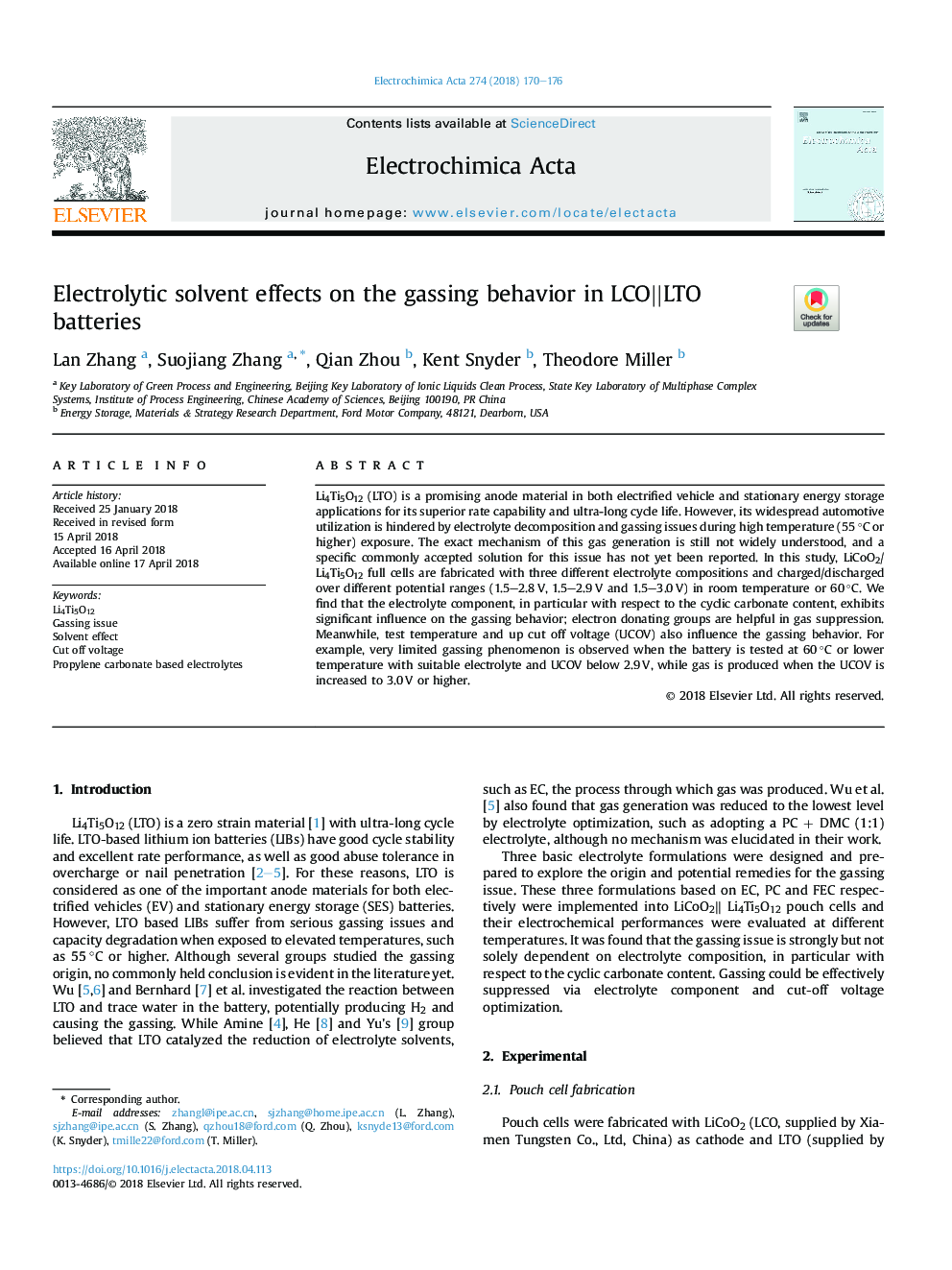| Article ID | Journal | Published Year | Pages | File Type |
|---|---|---|---|---|
| 6602995 | Electrochimica Acta | 2018 | 7 Pages |
Abstract
Li4Ti5O12 (LTO) is a promising anode material in both electrified vehicle and stationary energy storage applications for its superior rate capability and ultra-long cycle life. However, its widespread automotive utilization is hindered by electrolyte decomposition and gassing issues during high temperature (55â¯Â°C or higher) exposure. The exact mechanism of this gas generation is still not widely understood, and a specific commonly accepted solution for this issue has not yet been reported. In this study, LiCoO2/Li4Ti5O12 full cells are fabricated with three different electrolyte compositions and charged/discharged over different potential ranges (1.5-2.8â¯V, 1.5-2.9â¯V and 1.5-3.0â¯V) in room temperature or 60â¯Â°C. We find that the electrolyte component, in particular with respect to the cyclic carbonate content, exhibits significant influence on the gassing behavior; electron donating groups are helpful in gas suppression. Meanwhile, test temperature and up cut off voltage (UCOV) also influence the gassing behavior. For example, very limited gassing phenomenon is observed when the battery is tested at 60â¯Â°C or lower temperature with suitable electrolyte and UCOV below 2.9â¯V, while gas is produced when the UCOV is increased to 3.0â¯V or higher.
Keywords
Related Topics
Physical Sciences and Engineering
Chemical Engineering
Chemical Engineering (General)
Authors
Lan Zhang, Suojiang Zhang, Qian Zhou, Kent Snyder, Theodore Miller,
